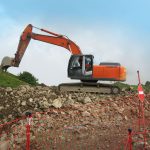Materials handling is a big potential sinkhole if not handled correctly. You can blow hours of time and wages with inefficient handling practices, and then lose even more time and money to injuries, time off, workers’ compensation claims, and having to train new workers or temps to account for absent personnel. Handling equipment like pallet jacks and forklifts can only handle so much and take up valuable square footage on limited floor space.
Ergonomics and You
Ergonomics is the study of people and how they interact with their working environment. According to the Department of Labor, workplace ergonomics are composed of three separate levels that contribute to lessening injuries.
- Personal Protective Equipment: Can include back braces or lifting belts, gloves, steel-toes boots, hardhats, and other equipment worn by the worker.
- Administrative Procedures and Work Practices: Establish “best practices” to minimize the risk of injuries such as having load teams to list loads heavier than X pounds, or rotating workers to tasks requiring less exertion after moving heavy loads.
- Engineering Controls: Using load handling equipment such as a hoist, gantry, or free standing bridge crane to lift, move, and position larger loads.
OSHA strongly recommends using mechanical aids, and that engineering controls can substantially reduce back injuries, which are one of the most common and debilitating workplace injuries. In fact, the CDC considers workplace injuries sustained from Manual Materials Handling to be a public health concern – enough so that they have a handout to help businesses improve their workplace ergonomics. In 2014 alone, by the Bureau of Labor Statistics’ data, there were 331,180 sprains, strains, and tearing injuries, not including 162,720 back injuries or 247,120 workplace accidents involving slipping, tripping, or falling.
Implementing and Installing
Working with a full-service supplier is very important when it comes to purchasing your equipment. Price alone should not be the sole consideration when it comes to choosing a crane or other ergonomic equipment. You want someone who can train your people as well as install, maintain, and repair your crane, and provide support. Working with an experienced company with a proven track record and network of suppliers will save you from calling customer support one day and getting the disconnect tone, leaving you high, dry, and at full stop with a malfunctioning crane. Working with professionals saves time, hassles, and money – which are the reasons you wanted that equipment in the first place.





